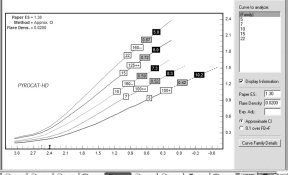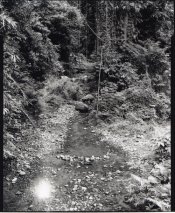KEK said:
Sorry to cut in here also but i've been reading alot of the threads on the pyrocats and i'm a little confused. I just received pyrocat mc in glycol from PF and bought it for a shorter development time and continuos aggitation of sheet film. Did I buy the right pyrocat or are the differences so small between them it doesn't matter.
Kevin
I hope to address previous questions and comments by Evan and Lee, as well as this one.
The differences between all high acutance developers are really very small, and among the Pyrocats the differences are even smaller. However, there are specific reasons why one of the Pyrocats might be favored for a given situation. For optimzing development, taking into consideration the degree of enlargment anticipated, and the expected adjacency effects that would be expected from the type of agitation, here is what I would recommend.
With continuous agitation (rotary processing in Jobo or tubes, for example), Pyrocat-HD for 35mm, either Pyrocat-HD or Pyrocat-MC for medium format films, and Pyrocat-MC for sheet film.
For processing of 35mm and medium format negatives in tanks, with normal agitation (agitation once every minute), Pyrocat-MC. For processing same film in tanks with minimal agitation (agitation every 2-3 minutes), Pyrocat-HD.
For sheet film with normal shuffle processing, either Pyrocat-MC or Pyrocat-HD.
For sheet film with minimal agitation procedures, Pyrocat-HD.
For processing ULF film for alternative printing or AZO 2 with rotary agitation, Pyrocat-MC, because of the low B+F with extended develoment, especially Actinic filtration.
Do not feel constrained by any of this. Pyrocat-HD and Pyrocat-MC are both good general purpose developers and will give excellent results with most films, formats and any types of agitation. And the differences are subtle and nuanced rather than striking.
Sandy







